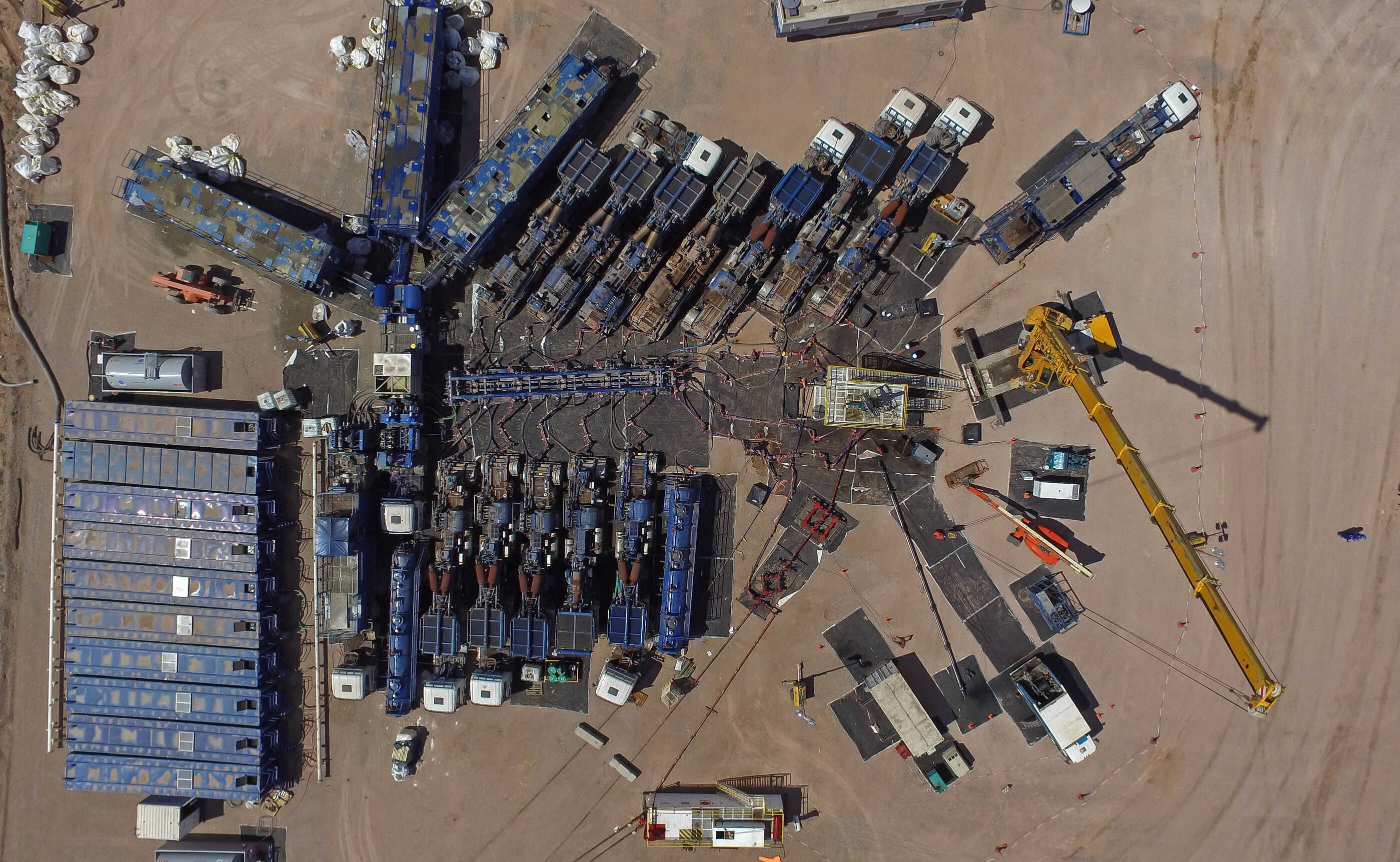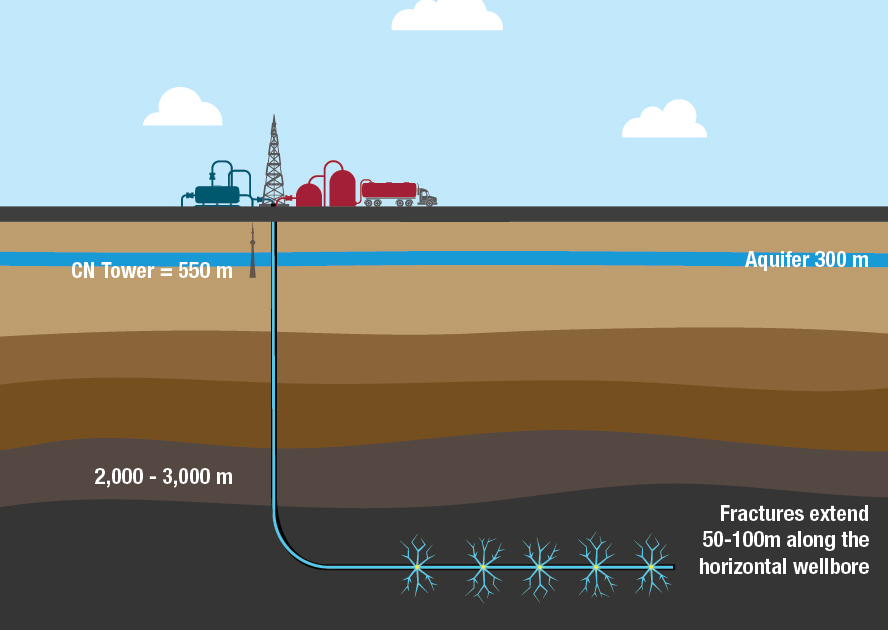Hydraulic fracturing (“Fracing” or “Fracking”) and horizontal drilling began in Texas in the 1980s. These are proven, highly regulated methods to extract oil and natural gas from tight rock formations.
Oil and natural gas can be trapped in geological formations that have tiny spaces within the rock (called “tight” formations). In these instances, these resources cannot be extracted using typical vertical wells and conventional production methods. Instead, horizontal drilling and hydraulic fracturing are used to produce oil or natural gas from tight formations. Tight formations are found throughout much of Western Canada. The Montney (northeastern B.C. and northwestern Alberta) and the Duvernay (northwestern / central Alberta) are two large Canadian development areas where this type of production is widely used. Horizontal drilling is also used in the Atlantic offshore industry.
Hydraulic fracturing and multi-well drilling from a single well pad have unlocked resources that were previously uneconomical to develop and have reduced the overall surface footprint of drilling activities. Several horizontal wells drilled from a single location (multi well-pad) can access a greater area of the reservoir from a smaller piece of land than the same number of vertical wells drilled from single-well pads. A 20-well pad disturbs about 5% of the land required for 20 vertical wells.
In horizontal drilling, a flexible drilling pipe is used with a steerable drill bit at the leading edge of the wellbore. The well is first drilled vertically, then at a specific target depth the drilling assembly is turned and the remainder of the well is drilled horizontally through the oil or natural gas deposit. After multiple layers of impermeable steel casing (pipe) and cement have been installed in the wellbore to protect groundwater, specific areas of the horizontal portion of the well are perforated to create access to the surrounding rock formation. Next, the process of hydraulic fracturing (or fracking) occurs when fluid is injected at high pressure into the perforations in the well. The hydraulic fracturing fluid is comprised mostly of water and proppant (sand or ceramic granules) which “props” open the fractures in the rock, creating pathways for the oil or natural gas to flow into the well.

On average, a hydraulic fracturing operation uses 5,000 to 30,000 cubic metres of water per well. Oil and natural gas producers continue to advance opportunities to reduce operational dependency on fresh water sources (rivers, lakes and groundwater aquifers), including integrating and reusing reclaimed water from municipal water treatment plants, saline water from deep aquifers, and produced water from operations where possible.
All wells, whether vertical or horizontal, are constructed to protect groundwater aquifers by using multiple layers of steel casing cemented in place around the wellbore to create a solid barrier between the well and the groundwater aquifer.
Hydraulic Fracturing Facts
- • Water and sand comprise between 98% and 99.9% of hydraulic fracturing fluid. Additives that provide special properties to the fluid make up the remainder. Additives are used to limit bacterial growth, prevent corrosion, and to change the viscosity of hydraulic fracturing fluid to reduce the volume of water required for fracturing operations. The composition of fracturing fluid varies from one rock formation to another. All additives used must comply with applicable provincial and federal regulations. (Source: FracFocus)
- Tight formations that require hydraulic fracturing to produce oil or natural gas are deep underground and wells are designed and drilled to protect groundwater aquifers. Drinking water aquifers are usually found at depths of less than 300 metres. A well that is hydraulically fractured is typically drilled to a vertical depth of 2,000 to 4,000 metres, far below any aquifers used for drinking water.

